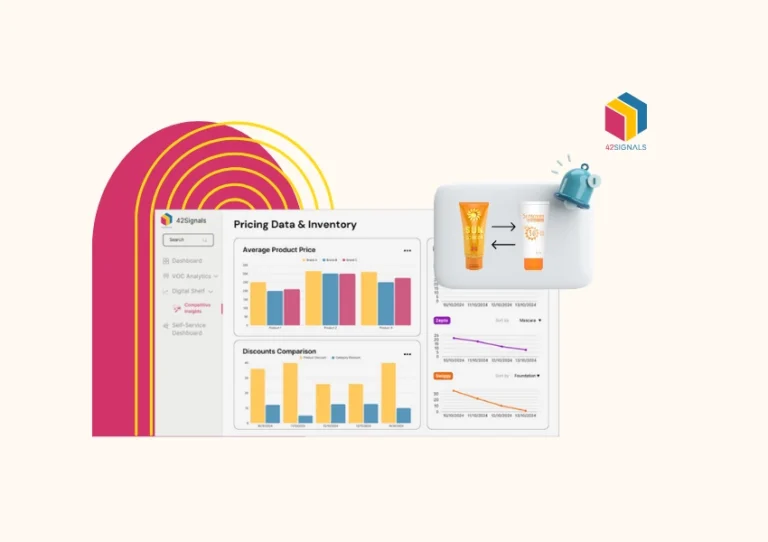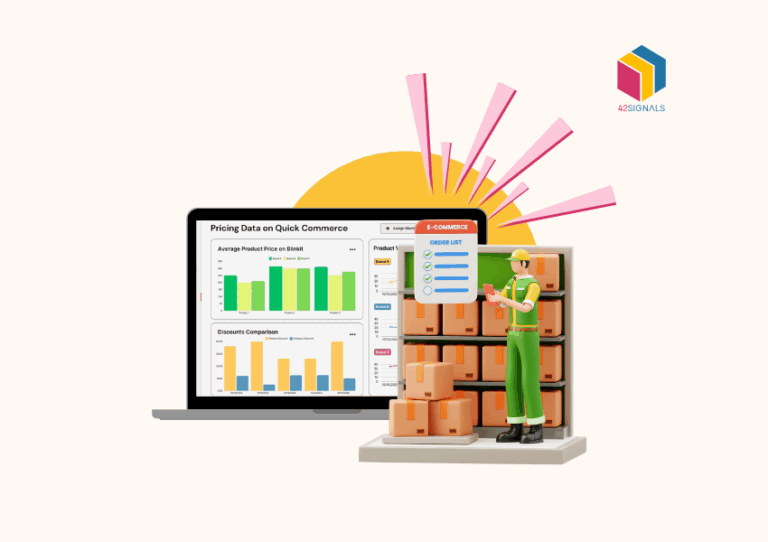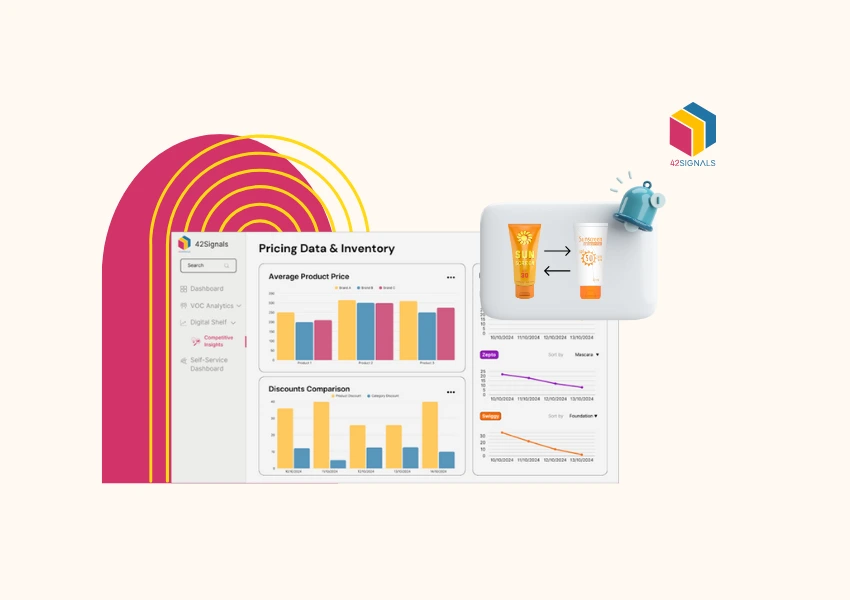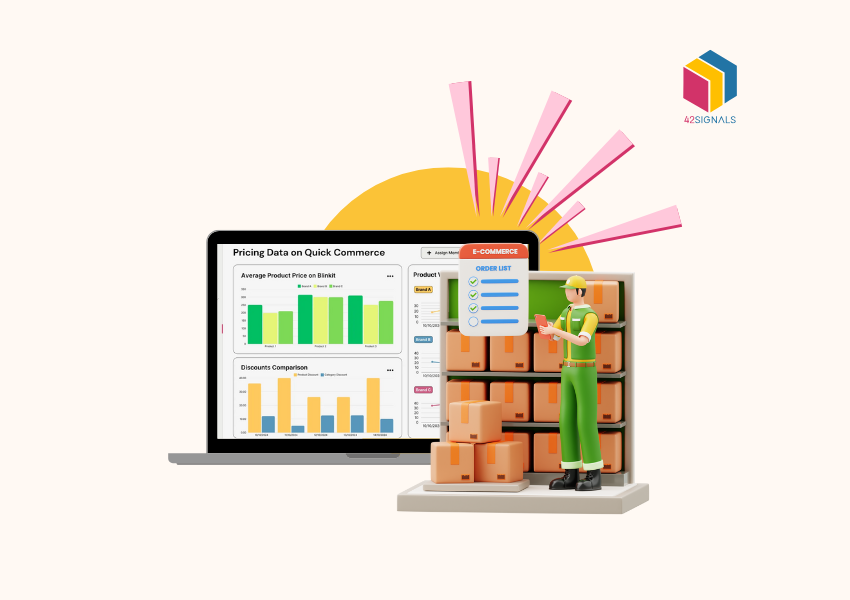The success of a brand today heavily relies on its online presence and the ability to effectively manage its digital shelf. As the competition grows fiercer, brands need to constantly analyze their online product offerings to stay ahead.
This is where digital shelf analysis tools like 42Signals come into play. In this article, we will explore what a digital shelf is, discuss the importance of digital shelf analysis, and highlight the top features of 42Signals for optimizing your digital shelf.
What is a Digital Shelf?
Imagine walking into a brick-and-mortar store and seeing rows of products neatly arranged products on shelves, each one enticingly presented. In the online world, e-commerce platforms serve as the digital equivalent of these physical shelves.
They’re the virtual storefronts where products are showcased and made accessible for buying. This digital shelf mirrors the virtual counterpart of physical store shelves, providing customers with information, images, and the ability to make a purchase, all in just a few clicks!
The digital shelf comprises various channels, such as e-commerce websites, online marketplaces, and social media platforms. Brands leverage these channels to showcase their products and engage with potential customers. It is essential for brands to analyze their digital shelf to ensure their products are optimized for maximum visibility and appeal.
The Importance of Digital Shelf Analysis
Digital shelf analysis provides brands with valuable insights into the performance and positioning of their products online. It allows brands to understand how well their products are being displayed, how they compare to competitors, and how they can improve their online presence. Here are some reasons why digital shelf analysis is crucial:
1. Competitive Advantage
By analyzing the digital shelf, brands gain a competitive edge by understanding how their products stand out or fall behind in comparison to competitors.
2. Product Visibility
Analyzing the digital shelf helps brands ensure their products are displayed prominently, increasing their visibility to potential customers.
3. Product Availability
Monitoring product availability is crucial to prevent out-of-stock situations, ensuring that customers can always find and purchase the products they want.
4. Customer Experience
By analyzing the digital shelf, brands can optimize the product information, imagery, and pricing to enhance the overall experience of potential customers.
5. Sales and Conversions
Understanding the performance of products on the digital shelf allows brands to make data-driven decisions to improve sales and conversion rates.
6. Adaptability
Digital shelf analysis helps brands stay agile in a rapidly changing online landscape by identifying trends, opportunities, and potential threats.
Optimizing Your Digital Shelf
To maximize the effectiveness of your digital shelf, it’s crucial to follow these best practices for optimization.
First and foremost, ensure your product descriptions are clear, concise, and emphasize the key benefits of your offerings. Incorporating relevant keywords will boost searchability.
Secondly, invest in high-quality product images and videos to present your products in the best possible light, employing multiple angles and zoom features for a comprehensive view.
Next, develop a pricing strategy by analyzing competitor pricing and positioning your products competitively, and consider offering special promotions or discounts to attract customers.
Encouraging customers to leave reviews and ratings for your products is essential, as positive reviews build trust and increase the likelihood of conversions.
Finally, employ SEO optimization techniques to enhance your product’s visibility in search engine results by using relevant keywords in product titles, descriptions, and metadata.
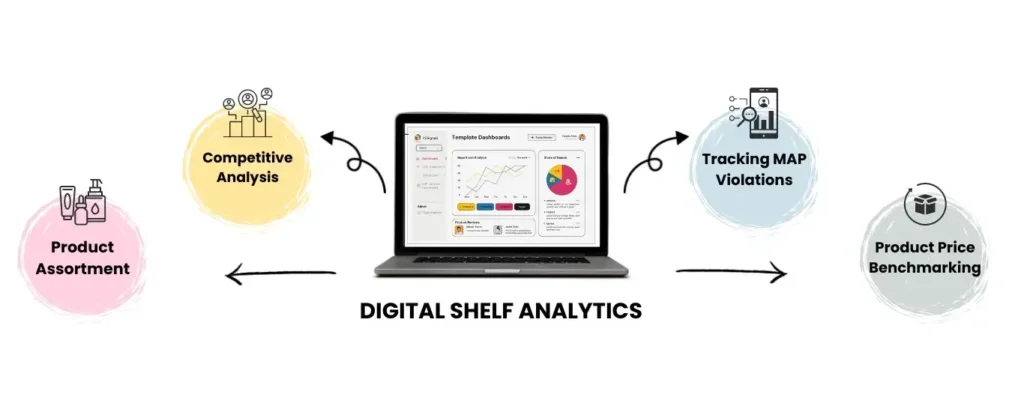
Getting Started with 42Signals
42Signals is a powerful digital shelf analysis tool that provides brands with comprehensive insights into their online product performance. Here is how you can get started with 42Signals:
1. Contact us
Reach out to the team at sales@42signals.com and opt for a FREE demo of the tool.
2. Subscription
Provide the necessary details and choose a subscription plan that suits your needs.
3. Integrate Your Channels
Integrate your company’s websites, online marketplaces, and social media platforms to 42Signals. This allows the tool to gather data from all the relevant channels.
4. Data Collection
Once you have integrated your channels, sit back and let 42Signals collect the necessary data. The tool will provide you with real-time analytics and reports.
5. Analyze and Optimize
Dive into the analytics provided by 42Signals to gain insights into your product performance, positioning, and customer engagement. Use these insights to optimize your digital shelf strategies.
Top Features of 42Signals for Digital Shelf Analysis
42Signals offers a range of features that empower brands to conduct powerful digital shelf analysis. Here are some of the top features:
1. Competitive Analysis
Compare your product performance with competitors to identify gaps and opportunities.
2. Real-time Monitoring
Get instant updates on how your products are performing on different digital channels.
3. Price Tracking
Keep track of competitor pricing and adjust your pricing strategy accordingly.
4. Share of Search on Amazon
Gain insights into your products’ share of search on the Amazon platform. Understand how often potential customers are searching for your products compared to competitors, helping you tailor your advertising and product optimization strategies effectively.
5. MAP Violation Monitoring
Ensure your Minimum Advertised Price (MAP) policies are upheld across various online retailers. 42Signals can help you quickly identify instances of MAP violations, allowing you to take swift corrective action.
6. Product Availability
Stay on top of your product availability status on different e-commerce platforms. Ensure that your products are in stock and accessible to potential customers, minimizing the risk of lost sales opportunities.
7. Trend Identification
Spot emerging trends in your industry to stay ahead of the curve.
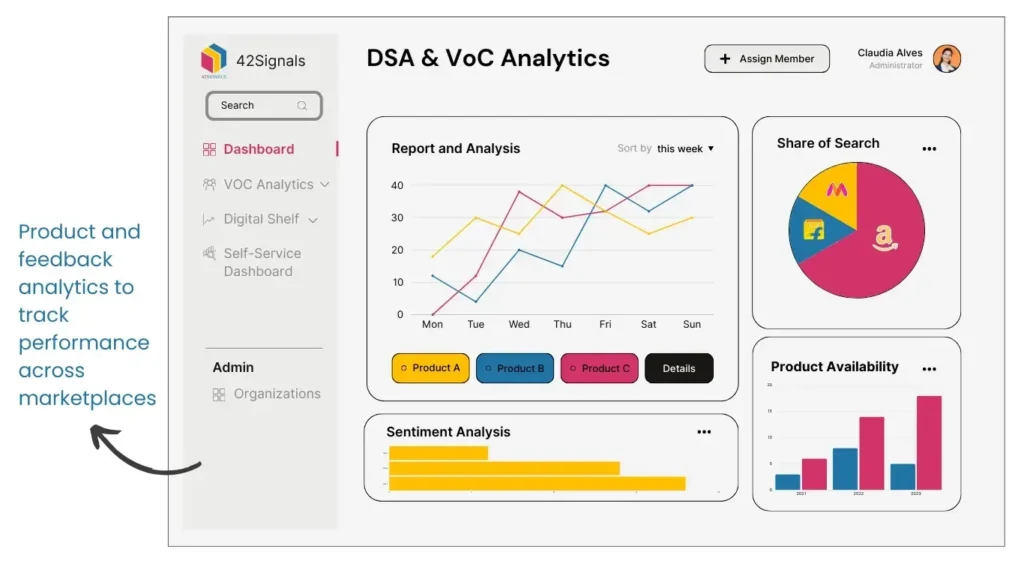
Conclusion
In today’s fast-paced digital landscape, effective digital shelf analysis is crucial for brands looking to succeed online. Leveraging tools like 42Signals allows brands to optimize their digital shelf, stay ahead of the competition, and drive increased sales and customer engagement.
With its comprehensive feature set, 42Signals empowers brands with the insights and tools needed to make data-driven decisions that boost their online presence.
So, why wait? Embrace the transformative potential of digital shelf analysis with 42Signals today, and elevate your brand to new heights in the digital landscape. The future of your online success is just a click away!

